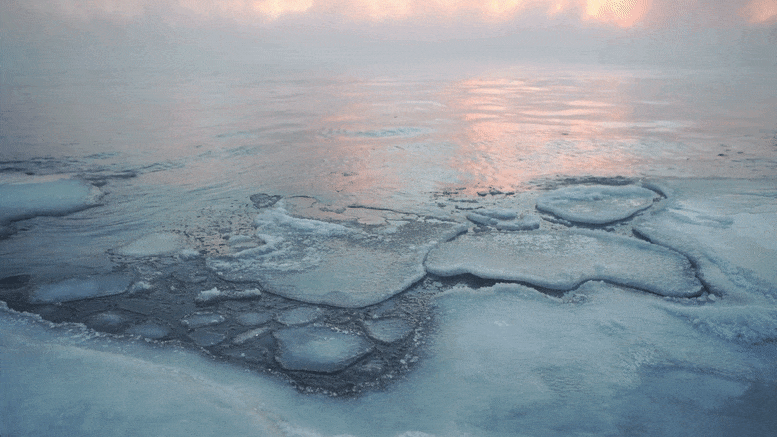
Because of the large fluctuations in ocean levels caused by changing tides, currents, and winds, sea level fingerprints have been notoriously difficult to detect.
The work validates almost a century of sea level science.
Sea levels experience a bizarre and counterintuitive phenomenon as ice sheets melt.
It functions much like a seesaw. Ocean levels drop in the vicinity of where these glacial ice masses melt. They do, however, rise thousands of miles away. This is primarily caused by the lack of a gravitational pull toward the ice sheet, which causes the water to disperse. Since each glacier or ice sheet that is melting has a different effect on sea level, the patterns have come to be known as “sea level fingerprints.” Modern sea level science has been built around elements of the notion, which is at the heart of the understanding that global sea levels don’t increase uniformly. It has been around for more than a century. But the commonly accepted concept has long had a problem. Researchers have never definitely found a sea level fingerprint.
A team of scientists, including Harvard University geophysicist Jerry X. Mitrovica and Harvard alumna Sophie Coulson, think they have found the first. A new study that was recently published in the journal Science describes their findings. The findings validate over a century of sea level research and assist to strengthen confidence in models that anticipate future sea level rise.
“Ocean level projections, urban and coastal planning — all of it — has been built on the idea of fingerprints,” said Mitrovica, the Frank B. Baird Jr. Professor of Science in the Department of Earth and Planetary Sciences. “That’s why fingerprints are so important. They allow you to estimate what the geometry of the sea level changes is going to be like… so we now have much more confidence in how sea level changes are going to evolve…. If fingerprint physics wasn’t correct, then we’d have to rethink all modern sea level research.”
Sea level fingerprints have been notoriously difficult to detect because of the major fluctuations in ocean levels brought on by changing tides, currents, and winds. What makes it such a conundrum is that researchers are trying to detect millimeter-level motions of the water and link them to melting glaciers thousands of miles away.
Mitrovica compared the search to the one for the subatomic particle the Higgs Boson.
“Almost all physicists thought that the Higgs existed, but it was nevertheless a transformative accomplishment when it was firmly detected,” Mitrovica said. “In sea level physics, almost everyone assumed that the fingerprints existed, but they had never been detected at a comparable level of confidence.”
The new study uses newly released satellite data from a European marine monitoring agency that captures over 30 years of observations in the vicinity of the Greenland Ice Sheet and much of the ocean close to the middle of Greenland to capture the seesaw in ocean levels from the fingerprint.
The satellite data caught the eye of Mitrovica and colleague David Sandwell of the Scripps Institute of Oceanography. Typically, satellite records from this region had only extended up to the southern tip of Greenland, but in this new release, the data reached ten degrees higher in latitude, allowing them to eyeball a potential hint of the seesaw caused by the fingerprint.
Mitrovica quickly turned to Coulson, a former Ph.D. student in Mitrovica’s lab and now a postdoctoral fellow at Los Alamos National Laboratory, to verify if this was truly the fingerprint signal sea level scientists had been chasing for decades.
“She was the best person to … accurately model what the fingerprint would look like given our understanding of how the Greenland Ice Sheet has been losing mass, and she could establish whether that prediction matched the satellite observation,” Mitrovica said.
Coulson, an expert in modeling sea level change and crustal deformation associated with the melting of ice sheets and glaciers, was visiting family in the U.K. when the datasets hit her inbox. She immediately recognized the potential, she said.
Coulson quickly collected three decades worth of the best observations she could find on ice height change within the Greenland Ice Sheet as well as reconstructions of glacier height change across the Canadian Arctic and Iceland. She combined these different datasets to create predictions of sea level change in the region from 1993 to 2019, which she then compared with the new satellite data. The fit was perfect. A one-to-one match showed with more than 99.9% confidence that the pattern of sea level change revealed by the satellites is a fingerprint of the melting ice sheet.
“I was completely amazed, there it was — a sea level fingerprint, proof of their existence,” Coulson said. “This was a really, really exciting moment for all of us. There are very few moments in science which provide such simple, remarkable clarity on complex earth processes.”
“This work, led so remarkably by Sophie, is one of the highlights of my career, a bookend to all the theoretical and computational work we’ve built with a community of international colleagues,” added Mitrovica, whose group was the first to present models and predictions of what sea level fingerprints should look like.
Scientific research usually takes years to develop the results and then get drafted into a paper, but here the researchers were able to act quickly. In total, the process took only a few months from when they saw the satellite data to when they submitted the piece.
That’s because the bulk of the legwork was already done. Much of the theory, technology, and methods had all been well developed already and advanced since Mitrovica and his team presented their work on sea level fingerprints about 20 years ago — computations that were widely accepted and have been factored into almost all models predicting sea level rise.
“This was high-risk, high-reward science, and no one expected a detection this quickly. We benefited an incredible amount from the groups supporting us, notably the Star-Friedman Challenge,” Mitrovica said.
Now that the first sea level fingerprint has been detected, the question with the biggest global implications is now where this all leads.
“More detections will come,” Mitrovica said. “Soon the full power of fingerprint physics will be available to project sea level changes into the next decade, century, and beyond.”
Reference: “A detection of the sea level fingerprint of Greenland Ice Sheet melt” by Sophie Coulson, Sönke Dangendorf, Jerry X. Mitrovica, Mark E. Tamisiea, Linda Pan and David T. Sandwell, 29 September 2022, Science.
DOI: 10.1126/science.abo0926

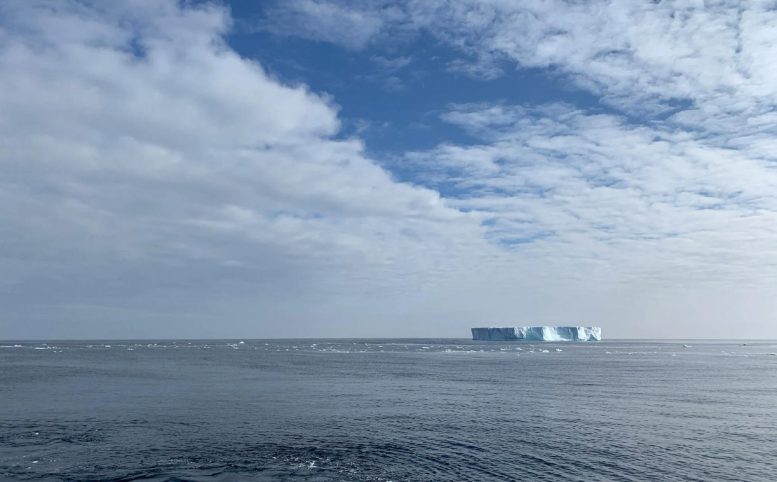
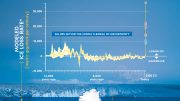
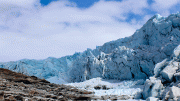

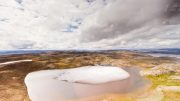
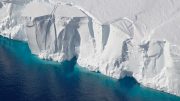

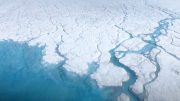
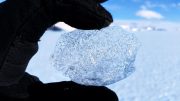
Second photograph: “Photo of a glacier. Credit: Kenichiro Tani”
That looks like an iceberg to me!
it is
Awareness is there and changes in energy generation is becoming more commonplace.
Indeed, but fossil fuels are still needed for the transportation involved in making the transition to renewables and to electric transportation.That will necessarily add more CO2 to the atmosphere until the transition is completed. None of that can have any significant effect on sea levels or Earth’s natural variability.
So we can now predict with more accuracy the timing of sea level rises and falls. This should help us better prepare for them instead of trying to mitigate or prevent them by moving CO2 around to reach impossible zero and net-zero emission goals. That’s a plus.
I’d like to see some serious research into the influences of geothermal effects on sea levels. It’s one aspect that has been completely ignored by Geophysics and yet remains the largest self evident influence on surface water levels. Without geothermal heat, all water would saturate the mantle as it drained down from the Earths surface.
the Gravitational pull of the Ice Sheets
that’s funny stuff
Try WEIGHT folks, it really is a much more powerful force then Gravity, Jeez
as the Ice melts the weight lessens and the Land LIFTS, Surprise, surprise, surprise
Since the Earth IS shaped like a Ball, as the poles lift, the central areas will sink some
You all look at this planet like its a solid Rock, that’s not even close to real
Funny but I thought the underwater coastal ruins in various places were a pretty hard clue.
The thing is the whole “CO2 is bad” is 180 degrees wrong. CO2 drives photosynthesis which allows complex life to exist – the whole food chain is built on it. For 500+ million years animals & plants have been turning CO2 into rock (limestone, shale, fossil fuels) to the point the level is decaying to the cessation of photosynthesis @150ppm. We’ve gotten as low as 180ppm. It used to 1000s of ppm. The plant sure was dying, burning fossils fuels, breaking limestone into QuickTime fir concrete has bought complex life on Earth a few million more years of existence.
Coastal water levels are going to change, the climate will change and what we do will have little effect on it. The “green” movement is misguided trying to play God. Adapt or die, but don’t think your going to stop it.
Love your response but others won’t because their sheep and people that believe what you just wrote we’ll were wolves who eat sheep but only a hand full of wolves cant kill off milliond of sheep we’ll try and for that the sheep will burn us as if we are witches
Right on Jim! Sea levels have changed many times over the years. Just look at ancient docks and piers that exist miles away from the nearest water. Also the ancient ruins that are now under water. The governments like to claim human activities are to blame for the rise in co2 and methane levels while omitting natural causes such as polar melting and cow farts. Cows don’t pay taxes though.might as well blame some Eastern religions and vegetarians for the rise of methane gas levels and lay the tax where the haters exist. Jeez.
And all this time I thought “sea level” was a barometric pressure.
Jim, with all due respect, you’re the misguided one. Yes, naturally thst would happen and certain geological events would definitely co tribute, however, the point you have yet to understand is they aren’t relevant and what we are doing is excellarating a climate shift.The issue is how woefully unprepared and unaware of when and this can definitely at some point cause unnecessary catastrophe and easily avoided deaths in the scale of the millions. The fact you have to be reminded of the implications tells me you aren’t quite as read up on this as you would have us believe. The fact of the matter is we are living unsustainably and relying on finite resources as a long term solution is nonsensical and suicidal. No, instead the issue is inpressing this upon corrupt, greedy and inept fossil fuel shareholders who will keep taking until nothing is left
It’s amazing that AGW deniers still abound and push the tropes “sea levels have always changed” or “CO2 levels were higher in the past”, which no scientist has ever disagreed with. But it’s the details and context that show how inane these claims are. It’s true CO2 levels were higher in the past, but not when humans existed. Yes sea levels have changed. At the end of the Pleistocene the melt waters rose sea levels by hundreds of meters. Humans are a cold weather species. The genus Homo, of which we are the latest iteration Homo Sapiens sapien, appeared during the Quaternary, the age of glaciation. At the start of the Quaternary, the continents were just about where they are today. Throughout the period, the planet has wobbled on its path around the sun. The slight shifts cause ice ages to come and go. By 800,000 years ago, a cyclical pattern emerged, the Milankovitch cycles, where Ice ages last about 100,000 years followed by warmer interglacials of 10,000 to 15,000 years each. The last ice age ended about 14,000 years ago. This means we should be steadily cooling down naturally over the next few thousand years to glacial temperatures. We aren’t experiencing that. Temperatures are rising fast. Temperatures over 95 degrees requires humans to have large quantities of water to cool ourselves or air conditioning technology to survive. As temperatures rise and the global drought continues water is becoming scarce. Mass migrations and wars over water will ensue with hundreds of millions of people at risk. It’s happening now.
Just a quick couple of questions? Why at the end of an ice age should as you stated “This means we should be steadily cooling down naturally”? I would think it would be as the period name interglacial describes a warming cycle until the next ice ave starts…. And as for human caused, why does noone talk about the billions of 100 deg furnaces that keep breeding(yes human caused in the absolute undeniable grandeur) the rules of thermodynamics tell us the temperature of this planet will stabilize at no less than 98 deg day or night if we keep producing furnaces.
Im not denying anything anyine is putting out tyre i just had these simple thoughts…
Ok q more what caused thier not to be oce on greenland last time?
Well then, I guess it is settled then…..roflmao…please reference this comment after reading through all the others…still laughing